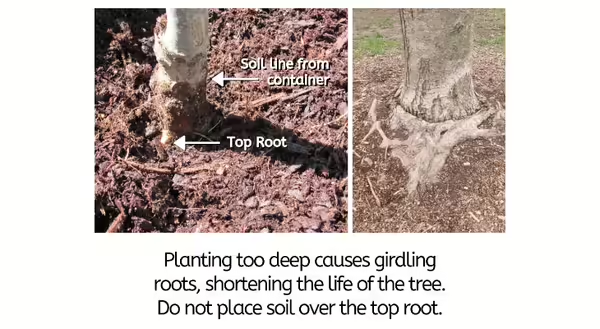
George Monibot, environmental activist, says “there is a magic machine that sucks carbon out of the air, costs very little, and builds itself. It’s called a tree. […] A natural climate solution.” The statement leaves you baffled. Simply planting a tree can help solve climate change.
In school we learned that trees take carbon from the air, and through photosynthesis, convert it to oxygen, sugars, and cellulose. The oxygen is released into the air, sugar gives the tree energy to grow, and the cellulose becomes new wood. As the tree grows, more and more carbon is held in the tissues of the tree. Then, when the tree dies, the carbon is slowly released into the soil and back into the atmosphere.
But it is not enough to just plant a tree. Many trees planted in urban environments do not survive for long due to incorrect planting. The tree needs to grow and thrive for the effect on climate change we are seeking. When we plant trees correctly, we help them get through transplant shock.
One of the most critical mistakes people make is planting trees too deep. When preparing to plant, you must find the top root, and plant up to that level—no higher. Sometimes the tree is planted too deep at from the nursery, so gently remove the soil by hand from the trunk, until you find a root. This one small step before planting will improve the establishment of the tree and drastically increase the life expectancy of the tree.
A second mistake is over-mulching. Mulching is a huge benefit to trees—the practice conserves water, insulates roots, reduces weed competition, and helps avert lawn mower damage. Yet too much mulch is a tree killer. When mulch is piled against the trunk of tree, a handful of stresses are easily introduced: moisture build-up encourages rot and insect access, rodents have suitable coverage for nibbling on the tender young bark; and new roots may try to grow in the mulch, where they quickly dry out. It is important to understand that tree bark breathes through little dots called lenticels, helping the plant break down sugars when they are unable to photosynthesize.
A third mistake is thinking you can plant the tree and walk away. Trees need nurturing until well-established and can survive the environment on its own. Watering newly planted trees is essential. In the process of getting to your yard, the tree has lost roots, and is super stressed. A good rule of thumb is to water two gallons per inch of tree diameter, every week. Check the first two inches of top soil around the tree. When the top soil is dry, it is time to water.
Learn from tree failure in the urban landscape by not making these three mistakes, and you can contribute to the natural climate solution, using trees to sequester carbon.